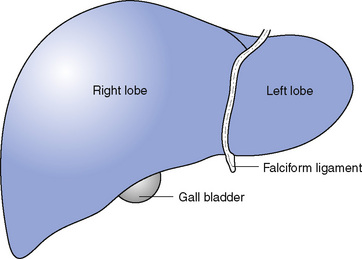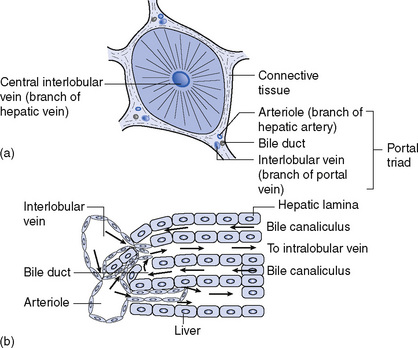19 The liver, biliary system and pancreas
Due to their anatomical proximity and their related functions in digestion, the liver, biliary system and pancreas are usually considered together. This chapter looks at the structure of the liver and its function, particularly in the production of bile. The way the biliary system concentrates and subsequently releases bile is described and, finally, the structure and secretions of the pancreas are considered. The function of the pancreatic enzymes is the subject of Chapter 21.
The liver
The liver is the largest gland in the body. It is situated in the upper right part of the abdominal cavity, occupying almost all of the right hypochondrium and fitting under the diaphragm. It has two main lobes, the right lobe being much larger than the left (Fig. 19.1). The right lobe lies over the right colic flexure and the right kidney and the left lobe over the stomach.
Structure of the liver
The liver consists of a large number of hepatic lobules which appear hexagonal in shape (Fig. 19.2). Each is approximately 1 mm in diameter and has a small central intralobular vein (a tributary of the hepatic veins). Around the edges of the lobules are the portal canals, each containing a branch of the portal vein (interlobular vein), a branch of the hepatic artery and a small bile duct. These three structures together are known as the portal triad.





